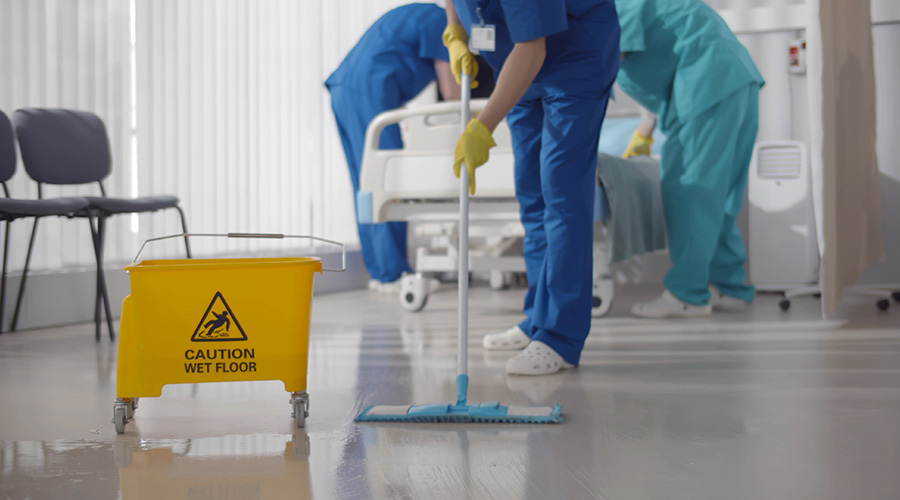Where do 'superbugs' hide in hospital rooms? Ten common patient touch points are where most environmental cultures are obtained in research on the effectiveness of decontamination methods used in hospital rooms.
An estimated 100,000 Americans die annually from health care-associated infections, according to the Centers for Disease Control and Prevention. That's more than the death toll from AIDS, breast cancer and car accidents combined, according to a press release from the Lumalier Corp., manufacturers of TRU-D SmartUVC, a germ-killing UV disinfection robot
Hospital administrators are heightening efforts to rid their environments of the pathogens that cause these HAIs - especially in the wake of more rigid penalties packaged into the Patient Protection and Affordable Care Act for hospitals who report high rates of HAIs, coupled with the looming threat of losing valuable reimbursement from Medicare, Medicaid and many private insurance companies for preventable infections acquired during a patient's stay.
These HAIs are the result of hardy pathogens - such as Clostridium difficile, Methicillin-resistant Staphylococcus aureus, Acinetobacter spp. and vancomycin-resistant enterococci - that lurk in patient areas of hospitals and health care facilities, according to the press release.
These "superbugs"are sneaking past traditional methods of cleaning and disinfection and being transferred from patient to patient through contaminated surfaces in patient rooms, medical equipment and hospital staff. Studies have shown that traditional cleaning methods - such as hand-cleaning - are only 50 percent effective,leaving patients with a 50-50 shot at making an acquaintance with a pathogen on any of the top places that they hide in hospital rooms.
So, where are these sneaky bugs taking refuge? Here are the top spots:
• Bedside rail
• Bedside table
• Overbed table
• Chair arm
• Sink counter
• Bathroom area, specifically toilet and floor
• IV pole
• Monitoring equipment
• Critical and semi-critical equipment, such as catheters and ventilators
• Hands of the health care professional

 Contaminants Under Foot: A Closer Look at Patient Room Floors
Contaminants Under Foot: A Closer Look at Patient Room Floors Power Outages Largely Driven by Extreme Weather Events
Power Outages Largely Driven by Extreme Weather Events Nemours Children's Health Opens New Moseley Foundation Institute Hospital
Nemours Children's Health Opens New Moseley Foundation Institute Hospital Code Compliance Isn't Enough for Healthcare Resilience
Code Compliance Isn't Enough for Healthcare Resilience Ribbon Cutting Marks First Phase Completion for New Montefiore Einstein Facility
Ribbon Cutting Marks First Phase Completion for New Montefiore Einstein Facility